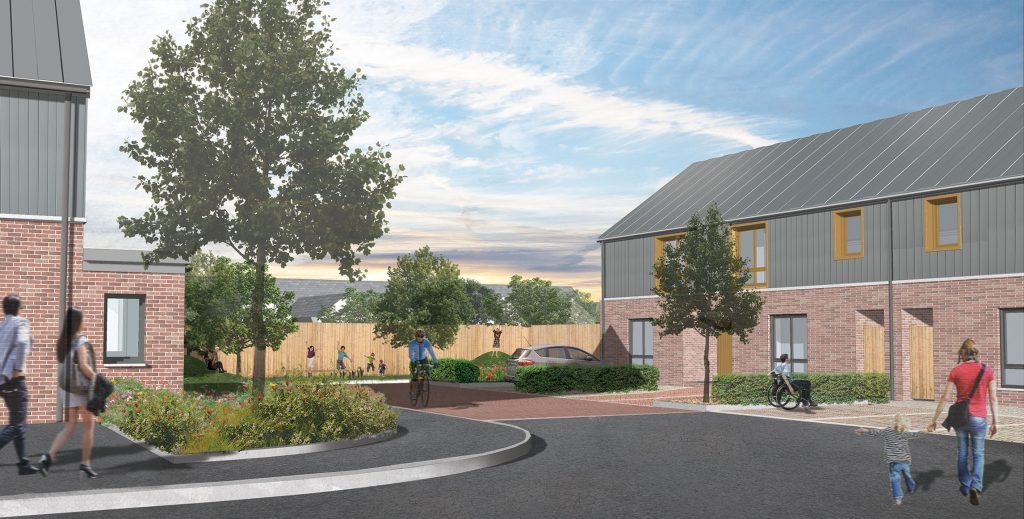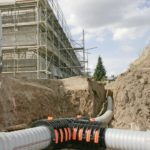News - Construction News
£43M investment in innovative housing
19 Oct 18

Housing and Regeneration Minister Rebecca Evans has announced a number of projects which will share in the second phase of the three-year Innovative Housing Programme, worth £90M in total.
Houses that generate their own power, flats with vertical gardens and homes built using local supply chains are some of the projects to share in £43M of innovative housing funding in Wales.
The sponsored projects are wide ranging in innovation, size and location, and include a 225 homes development near Tonyrefail, where a c£7M investment will create the infrastructure to ensure the homes can act as power stations. Developed for Pobl Group, this is the first development in the UK at this scale.
In Burry Port, Cartrefi Croeso are building 30 homes through a £4M investment using Welsh timber, local off-site manufacturing, local labour, and feature Tŷ Solar panels manufactured in West Wales.
While a loan of £650,000 for Denbighshire Council enabled partners to establish a factory to produce timber-framed Passivhaus homes for local social landlords, Cartrefi Conwy will receive £442,000 to build 16 homes using the system. The local supply chain will provide training to local people who might otherwise face barriers to the jobs market.

A range of social housing will also be built through several council programmes, constructed using local materials, to provide affordable, flexible housing for local people.
Wales and West Housing Association will receive £839,000 to build 14 homes in Bridgend using the Solcer House model which incorporates energy efficiency and renewable technologies, and some £9M will go to Linc Cymru Housing Association to create 50 homes in a timber tower with vertical greening in Cardiff, amongst others.
Rebecca Evans said: “We are investing in our Innovative Housing Programme to reduce fuel poverty, reduce the impact of house building on the environment, and reduce the health and wellbeing inequalities which are exacerbated by poor quality housing.
“It is clear that if the scale and pace of house-building is to increase significantly, traditional approaches are unlikely to deliver on their own. Done the right way, we have an opportunity to build high quality, near zero carbon homes, capturing and boosting the skills and expertise within the Welsh construction and manufacturing industries.”
If you would like to read more articles like this then please click here.
More News
- Landfill tax will not enable the circular economy
11 Dec 25
The National Federation of Builders (NFB) has released a short report titled, ‘Going full circle:
- Belfast Harbour Secured as £100 Million Hub for Major Offshore Wind Projects
10 Dec 25
Belfast Harbour is set to become the primary assembly and construction hub for two of
- Government Earmarks Rail-Adjacent Land for Accelerated Housing Development
9 Dec 25
The UK government has announced a significant package of planning reforms designed to accelerate the
-
-
Latest News
- Landfill tax will not enable the circular economy
11 Dec 25
The National Federation of Builders (NFB) has released a short report titled, ‘Going full circle:
- Belfast Harbour Secured as £100 Million Hub for Major Offshore Wind Projects
10 Dec 25
Belfast Harbour is set to become the primary assembly and construction hub for two of
- Government Earmarks Rail-Adjacent Land for Accelerated Housing Development
9 Dec 25
The UK government has announced a significant package of planning reforms designed to accelerate the
- Environmental goals prioritised as land for next phase of new town prepared for development
5 Dec 25
Northstowe is a sustainable new town comprising homes, education and community space.
- New laws will strengthen cyber defences for essential public services
4 Dec 25
UK government has introduced the Cyber Security and Resilience Bill to Parliament.
- Jacobs to deliver advisory services to public sector clients through 2027
3 Dec 25
Jacobs has been named as a supplier on the Crown Commercial Service’s (CCS) Management Consultancy
-
-






